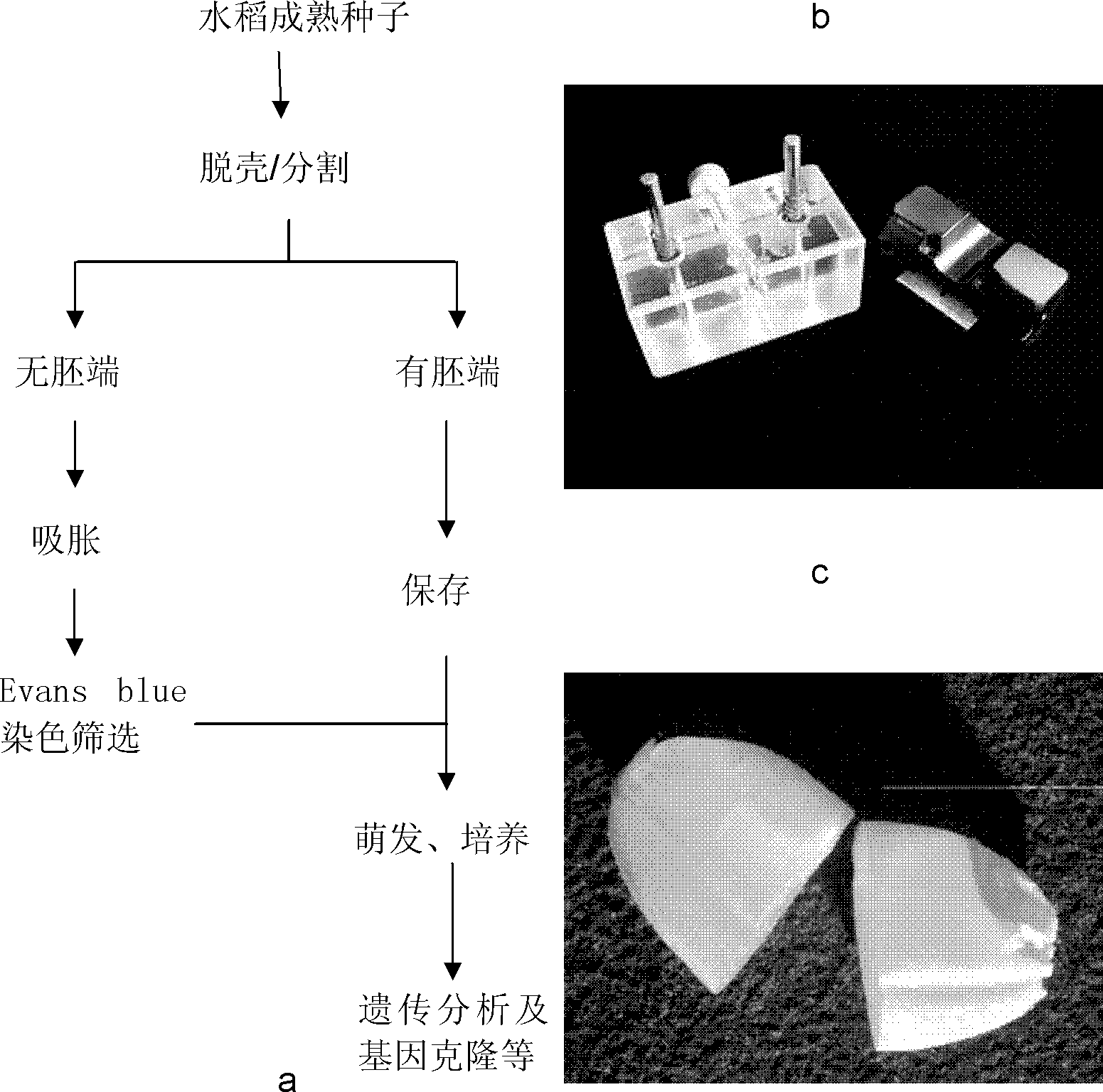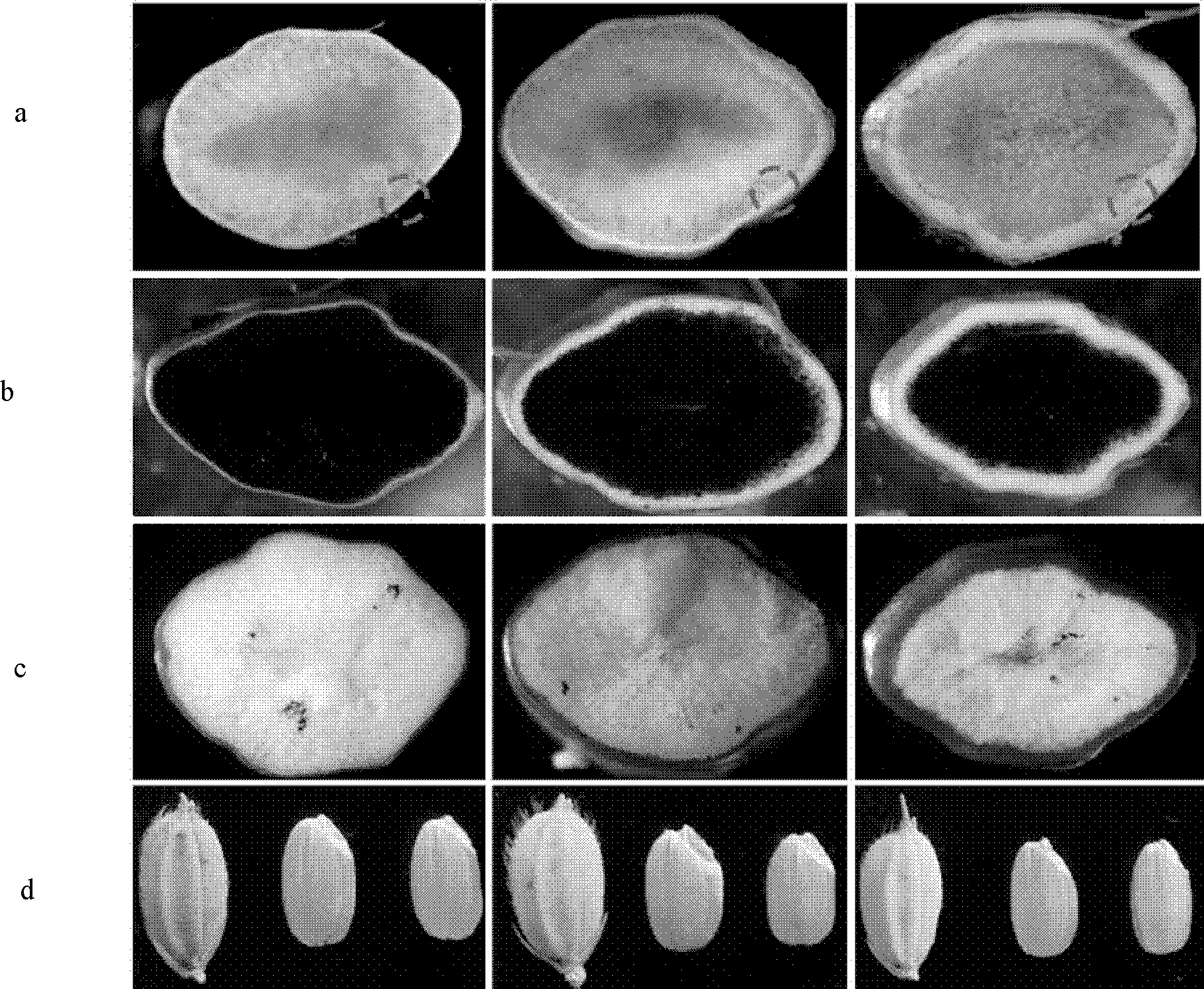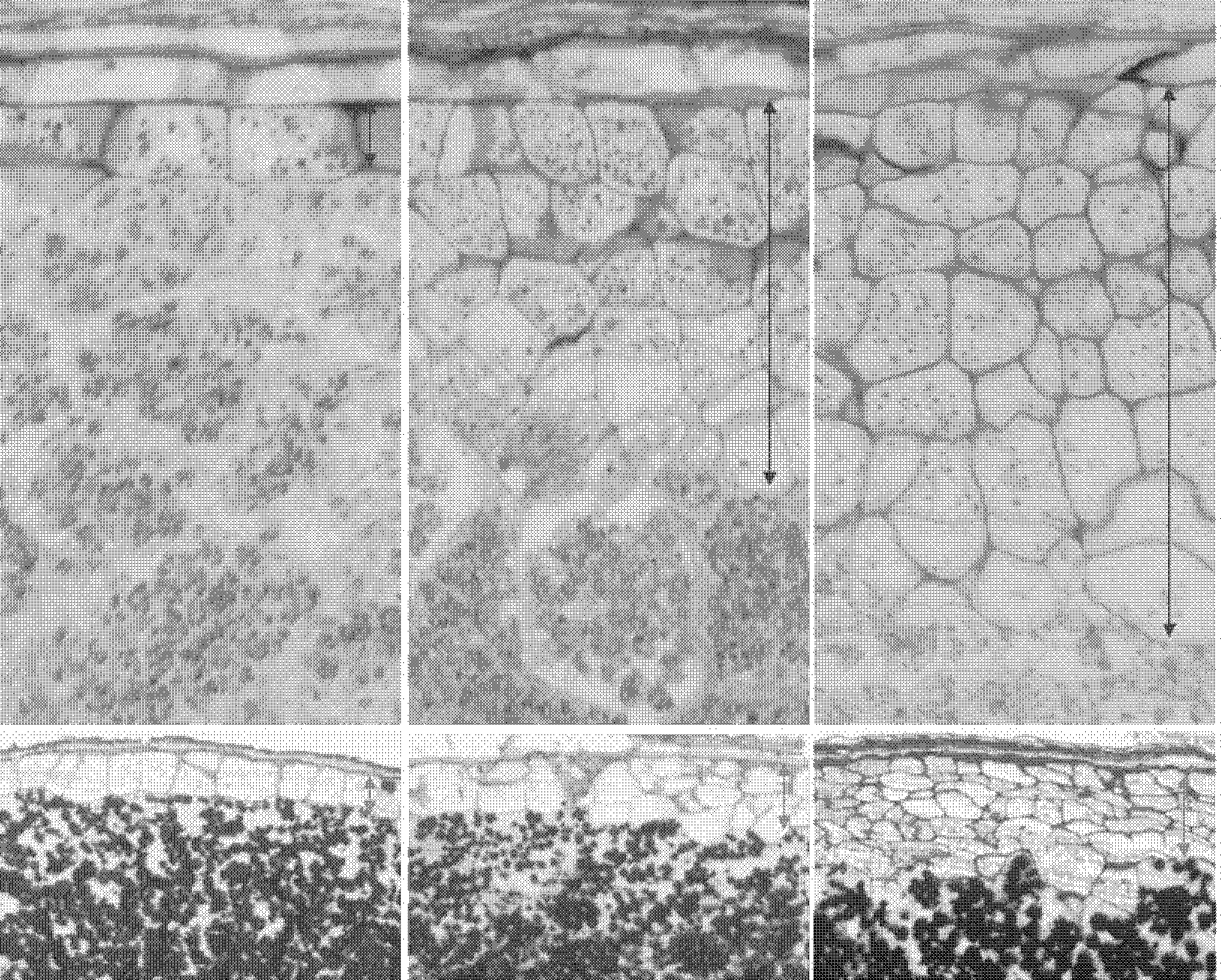Method for increasing content of nutrient components in rice by thickening aleurone layer
A technology for nutrient composition and aleurone layer, applied in the field of genetic engineering, can solve problems such as restricting the popularization and application of cultivated varieties, and achieve the effect of increasing grain width and thousand-grain weight
- Summary
- Abstract
- Description
- Claims
- Application Information
AI Technical Summary
Problems solved by technology
Method used
Image
Examples
Embodiment 1
[0023] Embodiment 1, utilize the thickening of aleurone layer to select and breed the paddy rice that nutrient component content improves
[0024] 8,000 Zhonghua 11 rice seeds (wild type, starting rice) were mutagenized with 60 mM ethyl methane sulfonate (EMS), and the seeds were planted to obtain 1,327 fertile M1 Plants (mutation first generation); a total of 8,927 single ears were harvested from M1 plants. Then 10 seeds were taken out from each single panicle, and preliminary screening was carried out by half-seed screening.
[0025] Wherein, the mutagenesis method is as follows:
[0026] Wash the seeds with water to remove dust, divide them into 200 grains each, put them into a 500ml blue cap bottle, add 100ml of water to soak, and shake at 125rpm overnight.
[0027] Pour off the water, add 60 mM EMS solution (prepared with 66 mM phosphate buffer, pH 7.0) for 24 hours of mutagenesis, and also shake at 125 rpm.
[0028] Remove the EMS solution, rinse with 100 ml of water ...
Embodiment 2
[0033] Embodiment 2, to ta-1 and ta-2 strain correlation yield character and nutrient composition determination
[0034] The other embryonated seeds of mutants ta-1 and ta-2 were planted. Use mercuric chloride to sterilize half of the seeds with embryos, sow them on 1 / 2MS medium, culture at 25°C, light 1,500-2,000lx, 16h / d, and wait until the seedlings grow 2-3 complete leaves. After 2-3 days of seedling hardening, move the seedlings to the soil, 30°C day / 20°C night, light 5,000-10,000lx, 12h / d and cultivate until firm. Harvest seeds (M2 generation) for further analysis and identification. The M2 generation is propagated to obtain the M3 generation and the M4 generation.
[0035] The yield shape and nutritional components of the ta-1 and ta-2 lines were determined, and the flowering period of the lines was two weeks later than that of the wild type. Investigating the grain length, grain thickness, grain width, and thousand-grain weight of the seeds, it was found that the se...
Embodiment 3
[0043] Embodiment 3, to the stability determination of ta-1 and ta-2 strain
[0044] Plant and reproduce the ta-1 and ta-2 strains screened out in Example 2, detect the content of each nutrient component according to the above-mentioned national standards respectively, evaluate and verify the stability of rice materials, the results show that ta-1 and ta-2 are in the greenhouse (planting M3 generation) and field planting (planting M4 generation) of two consecutive generations of materials have obvious high nutritional quality, and high nutritional and high-quality rice varieties have been obtained. Wherein, the mass percent content of the M3 generation protein of the ta-1 strain is 12.1%, the zinc content is 29.15%, the iron content is 16.55%, and the mass percentage composition of the fat is 4.45%; The mass percentage of M4 generation protein is 12%, the zinc content is 29.6%, the iron content is 44%, the mass percentage of fat is 3.7%; the mass percentage of M3 generation pr...
PUM
 Login to View More
Login to View More Abstract
Description
Claims
Application Information
 Login to View More
Login to View More - R&D
- Intellectual Property
- Life Sciences
- Materials
- Tech Scout
- Unparalleled Data Quality
- Higher Quality Content
- 60% Fewer Hallucinations
Browse by: Latest US Patents, China's latest patents, Technical Efficacy Thesaurus, Application Domain, Technology Topic, Popular Technical Reports.
© 2025 PatSnap. All rights reserved.Legal|Privacy policy|Modern Slavery Act Transparency Statement|Sitemap|About US| Contact US: help@patsnap.com



